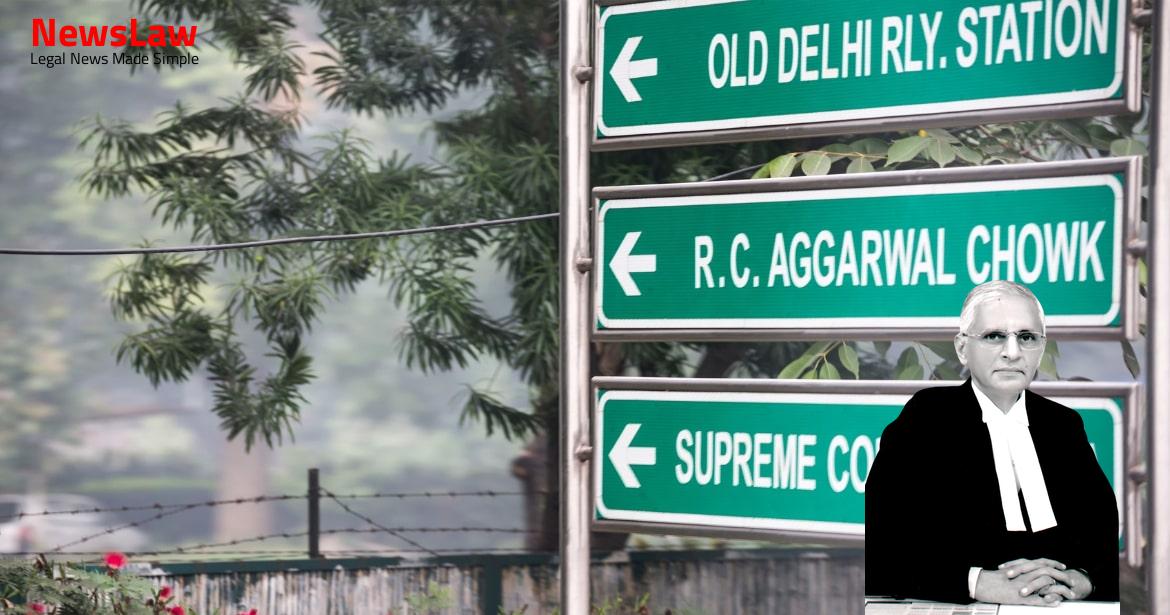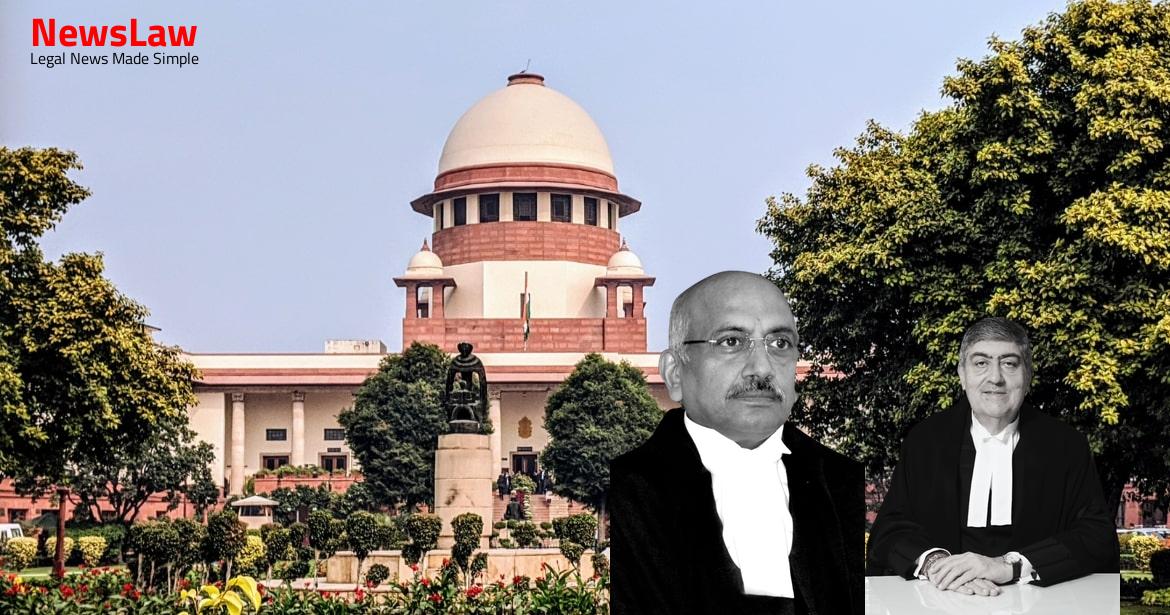The legal case delves into the intricate analysis of robbery and the use of firearms in criminal convictions. The court’s examination of the evidence and application of relevant legal provisions provides valuable insights into the interpretation of the law in such cases. The focus is on understanding the specific elements that determine culpability, particularly concerning the use of deadly weapons during criminal offenses.
Facts
- The complainant informed that he did not have any money and his motorcycle key and mobile phone were snatched by the accused.
- The accused forced the complainant to sit on the motorcycle and later abandoned him after the motorcycle got punctured in the village Nanawat.
- Chandrabhan Singh (PW8) examined the 12-bore gun, related to a separate incident where the complainant Rajesh Meena was threatened at gunpoint for money.
- Various witnesses including family members corroborated the complainant’s version of events.
- The trial court convicted the appellant and two other accused under IPC and MPDVPK Act, sentencing them to rigorous imprisonment and fine.
- The appeal before the High Court was filed by the appellant, challenging the conviction and sentence imposed by the trial court.
- The investigation led to the recovery of the motorcycle and mobile phone, with police arresting the accused based on the complainant’s narration of the incident.
- The trial court examined evidence from PW1 to PW12
- Documents were marked and material objects were identified
- The trial court found the appellant and co-accused guilty of the incident
- Conviction and sentence were subsequently handed down
Also Read: Supreme Court Upholds Rejection of Plaint Under Order VII Rule 11 of CPC: A Critical Analysis
Arguments
- The appellant and his co-accused claim that the case against them is false and politically motivated due to rivalry.
- They argue that the charge under Section 397 of IPC cannot be sustained as the firearm, even if carried, was not used.
- They contest the judgment of the trial court and claim to be falsely implicated.
- The High Court upheld the trial court’s conviction based on a detailed reappreciation of the evidence regarding the incident.
- The appellant, aggrieved by the judgments, is challenging them in this appeal.
- The appellant’s counsel argues that the complaint and evidence provided by PW1 are insufficient to prove the appellant’s guilt.
- The appellant’s contention that the charge under Section 397 of the IPC is not sustainable because the gun was not used is refuted.
- It is argued that even without the actual use of a deadly weapon, the exposure of the weapon to create fear in the victim is sufficient to prove the charge under Section 397 IPC.
- The State’s counsel highlights the evidence presented in the trial court that led to the conviction, including the recovery of stolen items and the examination of the gun used in the robbery.
- The expert’s opinion that the gun was in working condition is cited as evidence of its capability to cause fear, even without firing.
- The State contends that the judgment of the trial court and the High Court, based on the evidence presented, is sound and does not warrant interference.
Also Read: Validity of Debt and Enforcement of Section 138 NI Act
Analysis
- The application of Section 397 IPC will arise in the totality of the allegation and the consequent charge that will be framed against the accused.
- To benefit from the interpretation raised on the scope of Section 397 IPC, there should be no specific allegation against the appellant regarding the use of a firearm.
- The evidence tendered by the complainant Rajesh (PW-1) details the incident of robbery that occurred on the night of 26-27/6/2012.
- The use of a firearm to constitute the offense under Section 397 IPC does not require firing the weapon, but merely brandishing it to create fear is sufficient.
- If only one among the offenders had used the firearm or deadly weapon, only that offender would be liable to be charged under Section 397 IPC.
- The charge under Section 397 IPC can be fastened on the offender who actually uses the firearm to create terror in the victim’s mind.
- The evidence indicates that Raju alias Rajendra was the one who used the firearm during the robbery, leading to his conviction under the Arms Act.
- In the absence of allegations of the use of any deadly weapon by the appellants, Section 397 IPC shall not be attracted to them.
- The evidence and facts do not establish that the appellant used the firearm, hence the charges under Section 397 IPC and Section 11/13 of MPDVPK Act, 1981 are not sustainable against him.
- The detailed account provided by PW1 establishes that a robbery occurred where the appellant and his co-accused were involved, but the specific use of the firearm by the appellant is not proven.
- Various witnesses and the evidence presented support the occurrence of the robbery, with implications on the specific offenders based on their involvement and use of the firearm.
- Section 397 IPC applies when the accused commits robbery and uses a deadly weapon or causes grievous hurt or attempts to cause death or grievous hurt.
- Only the offender who actually uses the deadly weapon can be held liable under Section 397 IPC, others cannot be awarded the minimum punishment.
- The section only considers individual liability and not constructive liability.
- Other accused are not vicariously liable under Section 397 IPC for acts of the co-accused.
- The term ‘offender’ in Section 397 IPC refers to the one who uses any deadly weapon during robbery.
- Imprisonment under Section 392 cannot be less than seven years if a deadly weapon is used during robbery, causing harm, or attempting to cause harm.
- The possession of a deadly weapon by the offender, such as a knife, even if not used to cause harm, can lead to the application of Section 397 IPC.
- The distinction between Section 397 and Section 398 IPC lies in the use of ‘uses’ in 397 and ‘offender is armed with’ in 398.
- Section 392 of the Penal Code specifies punishment for robbery, and if committed on a highway between sunset and sunrise, the imprisonment term may be extended.
- The term ‘offender’ in Section 397 is limited to the offender who uses a deadly weapon.
- If one offender uses a deadly weapon during a robbery, it does not trigger Section 397 for the imposition of minimum punishment on another offender who did not use a deadly weapon.
- The use of a gun by one culprit, like accused Ram Kumar, satisfies the requirement under Section 397, and it does not need to be shown that the gun was actually used for cutting, stabbing, or shooting.
- The appellant participated in the robbery offense, which is established with sufficient evidence.
- The conviction under Section 392 IPC is upheld as per the trial court and High Court.
- The stolen motorcycle and mobile have been recovered.
- The appellant has already served around 3 years in prison, which is considered sufficient as punishment.
- Imprisonment for around 3 years deemed appropriate for the offense of robbery under Section 392 IPC.
- The sentence of 7 years rigorous imprisonment for charges under Section 397 and Section 11/13 of MPDVPK, Act, 1981 is set aside as those charges are not proved.
Also Read: Enlargement on Bail in Illegal Mining Case
Decision
- The sentence imposed on the appellant is modified to the period of imprisonment undergone by him until today.
- The fine imposed and default sentence thereof is retained.
- The conviction of the appellant under Section 392 IPC is upheld.
- The appellant is ordered to be set at liberty if the fine is paid and not required to be detained in any other case.
- The appeal is allowed in part as indicated above.
- All pending applications, if any, shall stand disposed of.
Case Title: RAM RATAN Vs. STATE OF M.P. (2021 INSC 912)
Case Number: Crl.A. No.-001333-001333 / 2018



